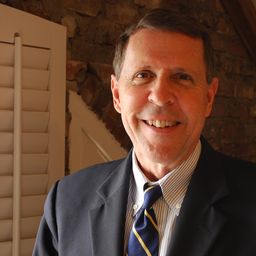
Mr. Craig Bennett Jr.
Craig Bennett is the founder and president of Bennett Preservation Engineering PC. He is a structural engineer with undergraduate degrees in both civil engineering and architecture, and a graduate degree in structural engineering. For the past 25 years, his focus has been on structural engineering for historic structures, but his experience also includes design of new structures of all sizes, including several early years in the design of high-rise hotels and office buildings.
Bennett’s particular strength is in the structural evaluation, repair, rehabilitation, and restoration of existing structures, with a specialization in historic preservation. His work regularly involves assessment of the causes of structural distress or failure and the design of rehabilitative measures.
Bennett is a former faculty member in the College of Architecture and the School of Civil Engineering at Georgia Tech. He is currently adjunct faculty in the joint Clemson University / College of Charleston Graduate Program in Historic Preservation, is past president of the Board of Trustees of the Charleston Museum and past chairman of the City of Charleston’s Board of Architectural Review.
Professional Experience
July 2012-Present Founder and President, Bennett Preservation Engineering, Charleston, SC
2002-2012 Founder and Principal Engineer, 4SE, Inc., Charleston, SC
1990-2002 Head of Engineering, Cummings & McCrady, Inc, Charleston, SC
1985-1990 Engineer, Sheridan Corp., Charleston, SC, part time
1981-1985 Engineer, John Portman & Associates, Atlanta, GA
1978-1985 Faculty, Georgia Tech School of Civil Engineering and/or College of Architecture, Atlanta, GA
Education
Georgia Institute Master of Science in Civil Engineering, Major: Structures, 1981
of Technology Bachelor of Civil Engineering, Major: Civil Engineering, 1978
Bachelor of Science, Major: Architecture, 1978
École des Beaux-Arts School year of study, 1975-1976
Paris, France
Registrations and Professional Affiliations
Registered Engineer: District of Columbia, Virginia, North Carolina, South Carolina, Georgia, Florida, Alabama and Mississippi
Association for Preservation Technology, International
American Society of Civil Engineers
American Concrete Institute
American Institute of Steel Construction
The Masonry Society
Construction History Society of America
Earthquake Engineering Research Institute
Regularly lectures at national and international conferences on structural engineering for historic preservation.
Academic Positions
Clemson University / College of Charleston Graduate Program in Historic Preservation, current adjunct faculty
College of Charleston, adjunct faculty in the undergraduate program in Historic Preservation and Community Planning, 2008-2013
Georgia Tech, Faculty of the College of Architecture and/or the School of Civil Engineering, 1978-1985
Civic and Community Activities
City of Charleston Board of Architectural Review, Past Chairman
Charleston Museum, Past President, Board of Trustees
Charles Towne Neighborhood Association, past Board Member
Charleston Symphony Orchestra, past Board Member
St. Philip’s Episcopal Church, past Vestry Member
Charleston Computer Club, past President
Publications by Craig M. Bennett Jr.
2013. Bennett, Craig M, and Kristine Morris. “Stability and Survival: The Structural Analysis of a National Treasure.” In Friends of Drayton Hall: Interiors. 31.3. 2-5, 11.
2013. Bennett, Craig M., et al. “Survivors Tales: Unreinforced Masonry and the 1886 Charleston, South Carolina Earthquake.” 12th Canadian Masonry Symposium, Vancouver, British Columbia.
2013. Bennett, Craig M. “Rebuilding the Walls of Fort Jefferson.” In Structure Magazine. 30-33.
2007. Bennett, Craig M. “Common Threads.” In Structure Magazine. 24-26.
1980. Bennett, Craig M. and Barry Goodno. “Structural Analysis on Microcomputers.” 2nd Conference on Computing in Civil Engineering.
Publications about Craig M. Bennett Jr. and his work
2015. Green, Henry. “Slave cabins behind historic Abbeville house studied.” In The Press and Banner.
2011. Behre, Robert. “Rice Mill gets a boost.” In The Post and Courier.
2010. Behre, Robert. “Fabled Façade.” In The Post and Courier.
2009. Harrison, Carlos. “The Fort that Time Forgot.” In Preservation. 30-32, 52-56.
2009. Behre, Robert. “The neatest thing you’ll never see.” In The Post and Courier.
2008. Mayo, Chris. “When the Bells Ring.” In Traditional Masonry. 3.2. 12-15.
2007. Parker, Adam. “Remaking History.” In The Post and Courier.
2000. Lameiras, Maria M. “Swinging Ring.” In Georgia Tech Alumni Magazine. 58-63.
Representative Historic Preservation Experience
1690-1710 141 Church Street, Charleston, SC
c. 1725 Brick House Plantation, Edisto Island, SC
1738-1752 Drayton Hall, Charleston, SC
1751 St. Michael’s Church, Charleston, SC
1764 Pompion Hill Chapel, Huger, SC
1787,1852 Unitarian Church, Charleston, SC
c.1780 56 South Battery, Charleston, SC
c.1790 Chart House, Savannah, GA
1790s 69 Church Street, Charleston, SC
1791 Lt. Governor Ladson House, 31 Meeting Street, Charleston, SC
1795-1799 Beaufort Arsenal, Beaufort, SC
1798 Kingsley Plantation, near Jacksonville, Fl
c.1800 Missroon House, Charleston, SC
c.1800 Fort Johnson Powder Magazine, James Island, SC
1803 58 George Street, Charleston SC
1804 John Mark Verdier House, Beaufort, SC
1809 Fort Washington, Prince George’s County, MD
1810 Marshlands Plantation House, James Island, SC
1814 Cathedral Church of St. Luke and St. Paul, Charleston, SC
1820 William Mason Smith House, 26 Meeting Street, Charleston, SC
1826 The Fireproof Building, Charleston, SC
1828-1930 Randolph Hall, Towell Library, Porter’s Lodge, Charleston, SC
1829 Fort Sumter National Monument, Charleston, SC
1833 Winnsboro Clock Tower, Winnsboro, SC
1833, 1922 First Baptist Church, Savannah, GA
1835 St. Philip’s Church, Charleston, SC
1840 Magnolia Grove, Greensboro, AL
1840s 21 Legare Street, Charleston, SC
1840s 5 College Way, Charleston, SC
1843 Gaineswood Historic House, Demopolis, AL
1845 Bennett Rice Mill, Charleston, SC
1846 Grace Episcopal Church, Charleston, SC
1846 Fort Jefferson National Monument, Dry Tortugas National Park, Garden Key, FL
1848 Walker Hall, Spartanburg, SC
1850 Church of the Holy Cross, Stateburg, SC
1854 Cedar Key Light, Seahorse Key, FL
1859 Cape Lookout Lighthouse, Cape Lookout National Seashore, NC
1864 Chalmette National Cemetery Walls, New Orleans, LA
1870 Cape Hatteras Lighthouse, Cape Hatteras National Seashore, NC
1880 230-232 Bull Street, Savannah, GA
1898 Plum Orchard, Cumberland Island, GA
1906 St. Luke’s Episcopal Church, Atlanta, GA
1925 Fort Sumter House, Charleston, SC
1925 Montgomery Building, Spartanburg, SC
1929 St. John’s Episcopal Church, Lynchburg, VA
1958 Walton Research Building, Charleston, SC
Sessions in which Mr. Craig Bennett Jr. participates
Friday 3 June, 2016
What does heritage change for tourism? | Le patrimoine, ça change quoi au tourisme? Ce débat veut interroger les relations entre le tourisme et le patrimoine et dépasser ainsi les idées reçues sur l'antagonisme entre le tourisme "corrupteur" et le patrimoine qui en serait la victime. Il s'agit donc de repenser le tourisme comme un réel acteur du patrimoine, de sa valorisation et de son appropriation, y compris par les populations locales. Cela présuppose, au p...
Sessions in which Mr. Craig Bennett Jr. attends
Saturday 4 June, 2016
What if we changed our views on heritage? And if heritage has already changed? While, on the global scene, states maintain their leading role in the mobilization of social and territorial histories, on the local scale, regions, neighbourhoods and parishes have changed. Citizens and communities too: they latch on to heritage to express an unprecedented range of belongings that no law seems to be able to take measures to contain, often to the discontent of...





